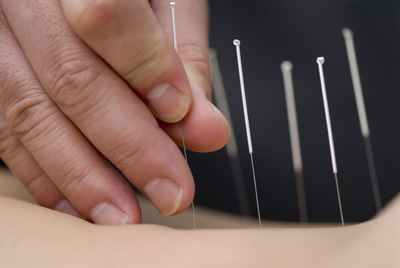Dry Needling
What is Dry Needle Therapy?
Dry needling technique is a method used in the treatment of tight bands, tender points and knots in the muscle. . It is used in the treatment of myofascial pain syndrome.
How is Dry Needling done?
To reduce pain and dissolve the muscle knots we call trigger points; It is the technique of placing a sterile disposable, thin filament needle intramuscularly. Needles should be thin like an acupuncture needle. The difference of this method from acupuncture is that the needles are inserted into the trigger points in the muscle, not the acupuncture point on the skin. Needles are not used to inject drugs, but to stimulate tissue. The needle is held for a while at the point where it was inserted and tiny rotational movements are made. During dry needling treatment, the patient may feel pain and twitching in the muscle. Depending on the severity of the disease, the needles can be short or longer, or superficial or deep needling. While shorter times mean seconds, long time means it can be 15-20 minutes. Fixing and stretching exercises can be done with cooling spray. The pain cycle is thus broken. The method can be applied 3-5 times, sometimes more, with intervals of several days, depending on the patient's complaints.
In fact, local anesthetic injection with fine needles can also be applied instead of dry needling. Although the application with local anesthetic is more painless, there is no risk of side effects since no medication is given in dry needling. In addition, when muscle pain is very common, dry needling becomes more advantageous since local anesthetic injection cannot be applied to every painful point.
In Which Diseases Can Dry Needling Be Used?
Dry needling method must be supported with appropriate complementary treatments. In this context, the dry needling method must be combined with the stretching exercises given for the relevant muscle.
- Muscle-induced pain, which we call Myofascial Pain Syndrome
- Neck-back and waist pains,
- joint diseases,
- tendinitis
- Pain in legs and arms
- Migraine, Tension-type headaches
- jaw problems
Dry needling therapy can be a part of exercise, physical therapy, manual therapy, neural therapy, or it can be applied alone.
What is Myofacial Pain Syndrome?
Myofascial pain syndrome is manifested by tight bands in the muscle and the presence of tender points in these bands (culp). Although it can be seen especially in the neck, back of the shoulder and muscles around the scapula, it can be seen in the whole body because our whole body is covered with muscle. It occurs most commonly in overstretched muscles that cannot fully relax. Although the largest tissue in the body is muscle, muscle tissue is neglected when it comes to pain. However, most of the pain is muscle pain, and the biggest part of it is myofascial pain. These pains can spread to nearby areas. Pain can be triggered by squeezing the relevant area, exposure to cold or pressure. In addition, myofascial pains may develop secondary to many diseases such as lumbar and neck hernia. In the treatment of myofascial pain syndrome, injecting local anesthetics into these sensitive points or simply prickling a needle is extremely effective when combined with stretching exercises.
Is Dry Needling a Very Painful Method?
Since we use very fine needles in dry needling, the method cannot be said to be painful. In cases where muscle pain is severe, it can be applied after the muscle is relaxed a little with physical therapy methods to ensure that the treatment is painless. In very sensitive cases, a superficial numbing cream can be used.
In Which Diseases Can Dry Needling Be Used?
It is frequently used in primary myofascial pain syndrome, secondary muscle pain due to lumbar neck hernia, fibromyalgia patients, headaches, low back neck stiffness. Especially painful disorders of the neck and back region are the most common use of dry needling technique. An important point to note is that the dry needling method is presented as an effective method in all kinds of diseases of the musculoskeletal system. Dry needling method will not work in many diseases where muscle tissue is not involved, such as inflammatory rheumatism, knee calcification, hip calcification. Dry needling method should be supported with complementary treatments as appropriate. In this context, the dry needling method must be combined with the stretching exercises given for the relevant muscle.
 >
>

